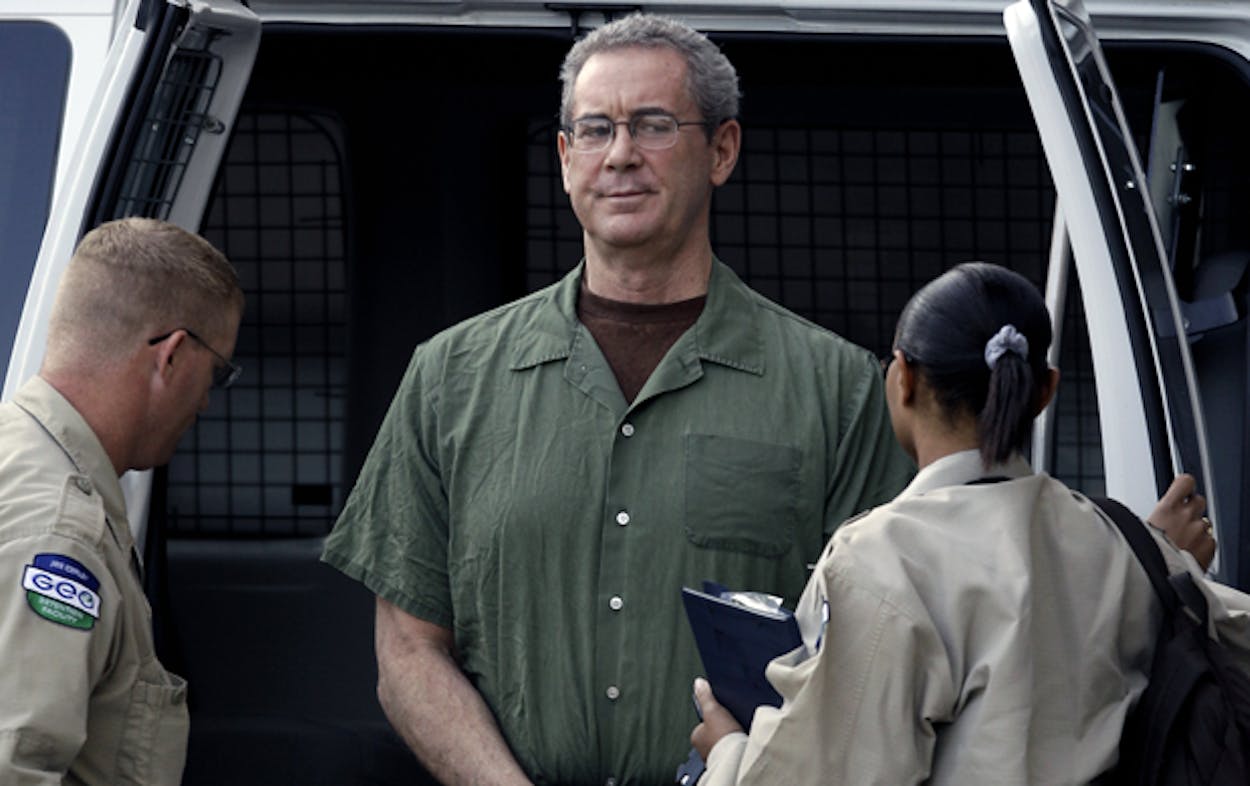Allen Stanford, accused of orchestrating a $7 billion Ponzi scheme that stretched to 30,000 investors in 113 countries, is set to go on trial next Monday in Houston.
A fourteen-count federal indictment alleges that Stanford issued fraudulent high-interest certificates of deposit from his Antigua-based Stanford International Bank, speculating with the money and skimming over a billion off the top to bankroll his extravagant lifestyle.
Prior to his fall, Stanford was ranked number 205 on Forbes’ Richest Americans List, but after a court froze his $2 billion in personal assets, he now must rely on court-appointed public defenders.
“What began as a financial scandal second only to the Bernard L. Madoff pyramid scheme that unfolded as financial markets collapsed in 2008 has devolved into a messy, slow-moving soap opera,” Clifford Krauss wrote in the New York Times.
The three years since Stanford’s arrest have been rough for him. Stanford’s lawyers have argued their client suffered serious brain damage after being badly beaten while behind bars, and they have asked repeatedly that the trial be delayed, Krauss wrote. Last January, Stanford was declared incompetent to stand trial because he had developed an addiction to anti-anxiety medication while in jail, but after undergoing drug rehabilitation and further evaluation, he was declared fit to stand trial in December.
When Stanford’s lawyers on Wednesday again asked U.S. District Judge David Hittner for a delay to allow Stanford more time to prepare his defense, the judge replied “You’re still pushing that?,” the Houston Chronicle‘s Purva Patel reported. This is unlikely to be the last time the issue is raised, as Stanford is expected to testify on his competency during trial.
For her May 2009 Texas Monthly piece, Mimi Swartz rushed to Stanford Financial Group in February after news broke that federal agents had raided the offices. She watched as dazed investors discovered the truth about the “megalomaniac from Mexia” and that the 4.5 percent average returns on their CDs were, in fact, too good to be true:
…A great many people were stunned when the Stanford tsunami hit—when Houstonians discovered that Sir Allen was, until his downfall, the de facto ruler of Antigua and Barbuda; that last year he landed in a gold-leaf-trimmed helicopter at the hallowed Lord’s cricket field, in London, carrying what was purported to be $20 million he hoped to use to revolutionize the stuffiest and slowest of sports; that he claimed to be a relative of Leland Stanford, the founder of Stanford University…and that he had become such a close friend of Tom DeLay’s that the defrocked Houston congressman and former U.S. House majority leader flew on Stanford’s jets eleven times. What’s more, Stanford had had a sybaritic, reality-TV-show kind of life, complete with a yacht, mansions, one wife and many girlfriends, one long separation and many splits, children from various unions, and at least one impressive paternity suit. As a former employee put it: “He could be a point guard for the New York Knicks.”
Swartz traveled from Mexia to Antigua to delve deeply into Stanford’s past and how he allegedly duped investors around the global into trusting him with their billions.







